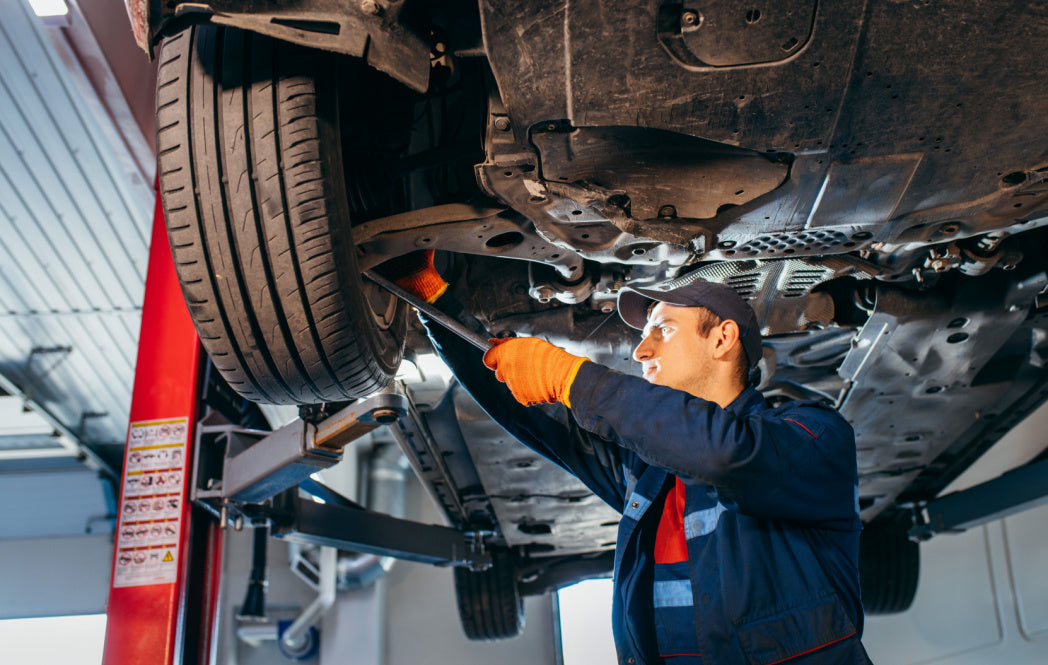Eco-friendly Auto Upgrades for City Drivers: Enhancing Sustainability on Urban Roads
Delve into the world of eco-friendly auto upgrades for city drivers, where innovation meets environmental consciousness. As urban areas face increasing challenges, exploring these upgrades promises a greener and more efficient future for driving enthusiasts.
As we navigate through the details of energy-efficient modifications, sustainable materials, and smart technologies, the essence of sustainability in the automotive industry unfolds.
Eco-friendly Auto Upgrades for City Drivers

When it comes to upgrading your vehicle for city driving, opting for eco-friendly options can make a significant difference. Not only do these upgrades help reduce your carbon footprint, but they also contribute to a cleaner and healthier environment.
Environmental Impact: Traditional vs. Eco-friendly Upgrades
Traditional auto upgrades often involve the use of non-renewable resources and can have a negative impact on the environment due to increased emissions and waste. On the other hand, eco-friendly upgrades focus on sustainability and efficiency, resulting in lower emissions and reduced waste.
Benefits of Eco-friendly Upgrades for City Driving
1. Improved Fuel Efficiency: Eco-friendly upgrades such as hybrid engines or electric conversions can help city drivers save on fuel costs and reduce their overall carbon footprint.
2. Reduced Emissions: By upgrading to eco-friendly technologies like electric vehicles or hydrogen fuel cells, city drivers can help lower air pollution levels in urban areas.
3. Enhanced Performance: Some eco-friendly upgrades not only benefit the environment but also provide drivers with a smoother and quieter driving experience.
Growing Trend of Sustainability in the Automotive Industry
The automotive industry is increasingly shifting towards sustainable practices, with more manufacturers offering eco-friendly options and investing in research and development for green technologies. This trend reflects a growing awareness of the importance of environmental conservation and the need for greener transportation solutions.
Energy-Efficient Modifications
Energy-efficient modifications play a crucial role in reducing fuel consumption and emissions for city drivers. By making the right upgrades, drivers can not only save money on fuel but also contribute to a cleaner environment.
Suitable Energy-Efficient Upgrades for City Driving
- Installing LED lights to reduce energy consumption for lighting.
- Upgrading to low rolling resistance tires to improve fuel efficiency.
- Adding a rooftop solar panel to harness renewable energy for auxiliary power.
How Energy-Efficient Modifications Reduce Fuel Consumption
Energy-efficient upgrades like LED lights and low rolling resistance tires require less energy to operate, leading to reduced fuel consumption. By optimizing the vehicle’s components for efficiency, drivers can get more mileage out of each gallon of fuel.
Impact of Energy-Efficient Upgrades on Emissions
Energy-efficient upgrades directly contribute to lower emissions by reducing the amount of fuel burned during driving. This results in a decrease in greenhouse gas emissions and air pollution, making city driving more environmentally friendly.
Examples of Energy-Efficient Technologies for Urban Environments
- Electric or hybrid drivetrains for efficient power delivery.
- Regenerative braking systems to capture and store energy during braking.
- Engine start-stop systems to minimize idling and save fuel.
Sustainable Materials and Components
When it comes to eco-friendly auto upgrades, the use of sustainable materials and components is crucial in reducing the environmental impact of vehicles while enhancing their performance.
Importance of Sustainable Materials
Utilizing sustainable materials in auto upgrades helps minimize the depletion of natural resources and reduces the carbon footprint of vehicles. These materials are often recyclable, biodegradable, or sourced from renewable sources, making them eco-friendly alternatives to traditional materials.
Durability Comparison
- Sustainable materials are known for their durability and longevity, often outperforming traditional materials in terms of strength and resilience. For example, bamboo fibers are lighter yet stronger than steel, making them a sustainable choice for vehicle components.
- Recycled plastics can also be as durable as virgin plastics, providing a sustainable solution without compromising quality or performance.
- By choosing sustainable materials, city drivers can benefit from long-lasting upgrades that reduce the need for frequent replacements, thereby minimizing waste and resource consumption.
Eco-Friendly Components for Enhanced Performance
- Solar panels can be integrated into vehicles to harness renewable energy and reduce reliance on traditional fuel sources, leading to lower emissions and improved fuel efficiency.
- Regenerative braking systems capture and store energy that would otherwise be wasted during braking, enhancing the overall efficiency of the vehicle and reducing energy consumption.
- Lightweight materials such as carbon fiber or aluminum alloys can improve fuel economy by reducing the overall weight of the vehicle, increasing performance without compromising sustainability.
Innovative Sustainable Materials in Auto Manufacturing
- Bio-based composites made from natural fibers like hemp or flax offer a lightweight and strong alternative to traditional plastics, reducing the environmental impact of vehicle production.
- Recycled materials like reclaimed wood or recycled rubber can be used for interior components, providing a sustainable and unique aesthetic while reducing waste.
- Eco-friendly paints made from plant-based or water-based formulas eliminate harmful chemicals and reduce emissions during the painting process, promoting a healthier environment.
Smart Technologies for Eco-Friendly Driving

Smart technologies play a crucial role in enhancing the eco-friendliness of vehicles by optimizing performance, reducing emissions, and promoting sustainable driving habits.
Role of AI and IoT in Optimizing City Driving for Sustainability
Artificial Intelligence (AI) and Internet of Things (IoT) technologies are instrumental in optimizing city driving for sustainability. AI algorithms can analyze driving patterns and traffic data to suggest more fuel-efficient routes, while IoT sensors can monitor vehicle performance in real-time to identify areas for improvement.
Integration of Renewable Energy Sources in Smart Vehicle Systems
Smart vehicle systems are increasingly incorporating renewable energy sources like solar panels or regenerative braking systems to reduce reliance on fossil fuels. These technologies help to supplement traditional power sources and decrease the overall carbon footprint of vehicles.
Examples of Smart Technologies Promoting Eco-Friendly Driving Habits
- Regenerative Braking Systems: These systems capture and store energy that would otherwise be lost during braking, converting it back into usable power for the vehicle.
- Driver Assistance Systems: Technologies like adaptive cruise control and lane-keeping assist can help drivers maintain more efficient driving habits, such as consistent speeds and optimal lane positioning.
- Telematics: Connected vehicle systems can provide feedback to drivers on their driving behaviors, such as acceleration, braking, and idling, to encourage more eco-friendly practices.
Wrap-Up
In conclusion, Eco-friendly auto upgrades for city drivers not only offer enhanced performance but also contribute to a cleaner environment. Embracing these advancements paves the way for a more sustainable and eco-conscious urban driving experience.
FAQ Resource
What are some common eco-friendly auto upgrades for city driving?
Eco-friendly tires, aerodynamic modifications, and electric engine conversions are popular choices for city drivers looking to reduce their carbon footprint.
How do energy-efficient modifications impact fuel consumption in urban environments?
Energy-efficient modifications like regenerative braking and start-stop systems help optimize fuel usage, especially during city driving with frequent stops and accelerations.
What are some examples of sustainable materials used in auto manufacturing?
Bamboo-based interiors, recycled plastics, and bio-based composites are some innovative sustainable materials making their way into modern vehicles.
How can smart technologies promote eco-friendly driving habits in cities?
Smart technologies such as adaptive cruise control, lane departure warning systems, and eco-driving apps help drivers optimize their driving behavior for reduced emissions and fuel consumption.




